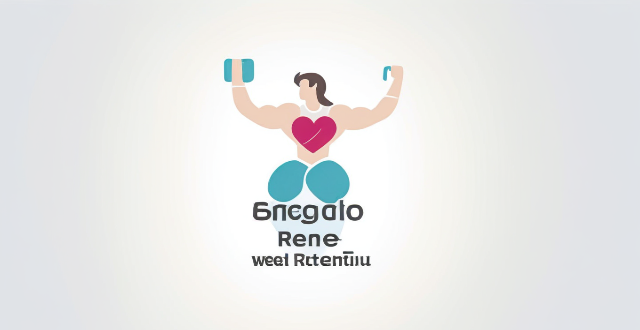Help Breathing

Are there any breathing techniques that can help reduce stress ?
Breathing techniques are a simple yet powerful tool for reducing stress levels and promoting relaxation. By practicing these techniques regularly, you can improve your overall well-being and reduce the negative effects of stress on your body and mind. Some effective breathing techniques for stress reduction include deep breathing, diaphragmatic breathing, alternate nostril breathing, and box breathing. These techniques help to increase oxygen flow to the brain, relax the body, balance the left and right hemispheres of the brain, and slow down the heart rate. Remember to focus on your breath and try to clear your mind of any distractions while practicing these techniques.

What is the proper breathing technique while running ?
Proper breathing technique is crucial for runners to improve performance, reduce fatigue, and prevent injuries. Diaphragmatic breathing involves taking deep breaths using the diaphragm muscle for efficient oxygen exchange. Rhythmic breathing matches breathing rhythm to stride pattern, promoting even and consistent breathing. Nasal breathing warms and humidifies air, but mouth breathing can be used when necessary. Relaxation and good posture are also important for optimal breathing mechanics. Incorporating these techniques into your running routine can enhance your overall running experience.

How can I improve my breathing technique while swimming ?
Improving your breathing technique while swimming is crucial for better performance and endurance. Understand basics, practice proper rhythm, use core muscles, work on exhalation, do dryland training, visualize success, and seek professional guidance to enhance breathing and overall swimming skills.

Are there specific breathing exercises that aid in maintaining focus ?
There are several breathing exercises that can aid in maintaining focus, including diaphragmatic breathing, alternate nostril breathing (Nadi Shodhana), box breathing, and roll breathing. These techniques calm the mind, reduce stress, and increase oxygen flow to the brain, enhancing cognitive function and mental clarity. Incorporating these exercises into your daily routine can help improve your ability to maintain focus and concentration.

Can wearing a face mask for a long time cause breathing problems ?
Wearing a face mask for extended periods can cause breathing issues, especially if the mask is not fitted properly or worn incorrectly. There are various types of face masks, each with its own potential impact on breathing, including surgical masks, N95 respirators, and cloth masks. Prolonged use of face masks can lead to increased resistance, humidity, and reduced oxygen intake. To minimize potential breathing issues while wearing a face mask, it's important to ensure proper fit, choose breathable materials, take breaks, stay hydrated, and consult a healthcare professional if necessary. Overall, the benefits of source control and infection prevention should be balanced against any minor discomforts experienced.

How do I administer CPR correctly in an emergency situation ?
Administering CPR correctly in an emergency situation involves a series of steps to ensure the victim receives proper care until professional help arrives. The key steps include: checking the safety of the scene, calling for help, checking the victim's responsiveness, looking for an AED, opening the airway, checking for breathing, performing chest compressions if the victim is not breathing, giving rescue breaths (if trained), using an AED (if available), and continuing CPR until help arrives or the victim starts breathing normally. The quality of chest compressions is crucial, as they must be hard and fast enough to mimic a heartbeat and force blood out to vital organs.

What techniques and strategies are commonly used in sport psychology counseling ?
The text discusses techniques and strategies in sport psychology counseling, which include goal setting, visualization and imagery, self-talk and affirmations, mindfulness and meditation, and breathing techniques. Goal setting helps athletes stay motivated and focused, while visualization and imagery build confidence and reduce anxiety. Self-talk and affirmations enhance self-confidence and motivation, while mindfulness and meditation improve mental clarity and resilience under pressure. Breathing techniques manage stress, anxiety, and tension. Incorporating these methods into training and competition preparation can help athletes achieve their full potential.

How do athletes cope with the mental stress of competition ?
Athletes employ various strategies to cope with mental stress during competitions, including visualization and imagery, breathing techniques, goal setting, social support, mindfulness and meditation, professional help, and maintaining healthy lifestyle habits. These methods range from mental preparation techniques to seeking professional guidance and engaging in leisure activities for relaxation and enjoyment. By incorporating these strategies into their routines, athletes are better equipped to handle the psychological demands of competition.

How do I perform the Heimlich maneuver effectively ?
The text provides a step-by-step guide on how to perform the Heimlich maneuver effectively in case of an airway obstruction emergency. It emphasizes the importance of proper positioning, forceful blows, checking for breathing, calling for help, and performing rescue breathing if necessary. The text also stresses the need for practice and skill in using the Heimlich maneuver before an emergency situation arises.

How do sports psychology techniques help with emotion regulation ?
This article explores the importance of emotion regulation in sports performance and how sports psychology techniques can help athletes regulate their emotions. The techniques discussed include self-talk, visualization, goal setting, breathing techniques, and mindfulness meditation. These techniques enable athletes to stay focused, confident, and motivated during competitions, leading to better performances. By incorporating these techniques into their training routines, athletes can learn to manage their emotions effectively and maintain optimal mental states for peak performance.

What are some discreet exercises I can do in an open-plan office ?
In an open-plan office, it's important to maintain your health and fitness while also being considerate of your colleagues. Here are some discreet exercises you can do in such a setting: 1. Desk Chair Exercises: Seated Leg Lifts and Seated Hip Circles 2. Under Desk Exercises: Calf Raises and Ankle Rotations 3. Stretching Exercises: Shoulder Shrugs and Wrist Stretches 4. Breathing Exercises: Deep Breathing and Alternate Nostril Breathing These exercises can be done without disturbing others around you. Remember to take breaks throughout the day to move around and stretch, which will not only help improve your physical health but also increase productivity and focus.

What are some common mistakes to avoid when practicing simple yoga postures ?
When practicing simple yoga postures, it is crucialWhen practicing simple yoga postures, it is crucial as not warming up properly, it is crucial to avoid common mistakes such as not warming up properly, ignoring alignment, overexertion, neglecting breathing, comparing oneself to others, and skipping Savasana. To prevent these errors, warm up gradually with dynamic stretches, focus on proper alignment, start at a beginner level and build up slowly, practice diaphragmatic breathing, set individual goals, and make time for Savasana. By avoiding these pitfalls, you can cultivate a safer, more enjoyable, and effective yoga practice that supports both physical health and mental well-being.

Can sports psychology help athletes deal with failure and loss more effectively ?
Sports psychology can help athletes deal with failure and loss by providing strategies for goal setting, visualization, self-talk, stress management, and coping mechanisms. These techniques enhance mental resilience and promote overall well-being, allowing athletes to perform at their best despite challenges.

What are the initial steps for managing a fracture until professional help arrives ?
Managing a fracture involves assessing the situation, immobilizing the injured area, controlling bleeding, elevating the injured area, and managing pain and discomfort until professional help arrives. It is important to use sturdy materials for splints and secure them properly to prevent further damage. Applying pressure to control bleeding and elevating the injured area can help reduce swelling and pain. Pain management options include taking over-the-counter pain relievers and applying cold compresses. Emotional support and reassurance are also important during this stressful time.

What are some natural remedies for stress relief ?
Stress is a common problem that affects people of all ages and backgrounds. While there are many ways to manage stress, some people prefer to use natural remedies instead of relying on medication or other treatments. Here are some natural remedies for stress relief: 1. Exercise: Regular exercise can help reduce stress by releasing endorphins, which are natural mood boosters. Even a short walk or jog can make a big difference in your overall well-being. 2. Meditation: Meditation is a popular way to reduce stress and improve mental clarity. It involves focusing on your breathing and clearing your mind of distractions. There are many different types of meditation, so you can find one that works best for you. 3. Yoga: Yoga combines physical exercise with mindfulness and relaxation techniques to help reduce stress and improve overall health. Many yoga classes also include music and aromatherapy to further enhance the experience. 4. Massage therapy: Massage therapy can help relieve muscle tension and promote relaxation by stimulating the release of endorphins and reducing cortisol levels in the body. 5. Aromatherapy: Essential oils such as lavender, peppermint, and chamomile have been shown to have calming effects on the brain and body, helping to reduce stress and anxiety. 6. Herbal teas: Herbal teas like chamomile, ginger, and lemon balm contain compounds that have been shown to have anti-inflammatory and calming effects on the body. 7. Deep breathing exercises: Deep breathing exercises involve taking slow, deep breaths through your nose while focusing on your breath. This helps to calm your mind and relax your body. 8. Spending time in nature: Being surrounded by nature has been shown to have a positive impact on mental health and reduce stress levels. Taking a walk in the park or going for a hike can be a great way to de-stress after a long day at work or school.

Can aerobic exercise help me lose weight ?
Aerobic exercise, or cardio, is an effective way to lose weight. It increases heart rate and breathing, leading to higher calorie burn during and after the workout. Moderate-intensity aerobic activities also use fat as fuel, improving metabolic rate for further calorie expenditure at rest. Regular cardio can strengthen heart muscles for efficient blood pumping and contribute to muscle endurance. Types of aerobic exercises include running, cycling, swimming, walking, and group fitness classes like Zumba. To successfully incorporate aerobic exercise into a weight loss plan, it's recommended to start slowly, mix up activities, stay consistent, and combine with strength training. Potential challenges such as overexertion and plateaus in progress should be managed by adjusting routines. Overall, aerobic exercise can aid in weight loss when part of a balanced fitness regimen.

What techniques can help me stay calm during a test ?
Techniques to Stay Calm During a Test Staying calm during a test can greatly improve your performance. Here are some techniques that can help you stay focused and relaxed: 1. Deep Breathing: Take slow, deep breaths to slow down your heart rate and lower your blood pressure, reducing feelings of anxiety and stress. 2. Visualization: Picture yourself successfully completing the test and achieving your desired outcome, boosting your confidence and relaxation. 3. Positive Self-Talk: Replace negative thoughts with positive affirmations that boost your confidence and motivation. 4. Break Down the Test into Smaller Parts: Focus on one question at a time without worrying about the others. 5. Time Management: Allocate enough time for each section of the test and stick to your plan, working steadily but efficiently.

Are there any specific exercises for dealing with test anxiety ?
Managing Test Anxiety: Strategies for Success Test anxiety is a common issue faced by many students, especially during exams. It can have a negative impact on performance and overall well-being. However, there are specific exercises that can help in dealing with test anxiety. In this article, we will discuss some effective strategies for managing test anxiety. Mindfulness meditation is a powerful tool for reducing stress and anxiety. By focusing on the present moment and observing thoughts without judgment, you can learn to calm your mind and reduce feelings of anxiety. Deep breathing exercises can help to slow down your heart rate and relax your muscles, reducing feelings of anxiety. Visualization techniques involve imagining yourself successfully completing a task or achieving a goal. This can help to build confidence and reduce anxiety. Cognitive restructuring involves identifying and challenging negative thoughts that contribute to anxiety. By replacing these thoughts with more realistic and positive ones, you can reduce feelings of anxiety. In conclusion, test anxiety is a common issue faced by many students, but there are specific exercises that can help in dealing with it. Mindfulness meditation, deep breathing exercises, visualization techniques, and cognitive restructuring are all effective strategies for managing test anxiety. By practicing these exercises regularly, you can reduce feelings of anxiety and improve your performance on exams.

How can sports psychology help athletes manage stress and pressure during competitions ?
Sports psychology helps athletes manage stress and pressure during competitions by providing techniques and strategies to improve mental toughness, confidence, and focus. These techniques include goal setting, visualization, breathing exercises, mindfulness and meditation practices, and coping strategies such as problem-solving and emotion regulation. By implementing these tools, athletes can improve their performance and enjoy their sport more fully.

Can simple yoga help with stress relief and relaxation ?
Yoga, a practice that originated in ancient India, combines physical postures, breathing techniques, and meditation to promote overall well-being. Many people turn to yoga as a way to manage stress and find relaxation. Simple yoga can make a difference by providing both physical and mental benefits. Practicing yoga regularly can help improve flexibility and strength, better posture, increased energy, reduced stress and anxiety, improved focus and concentration, enhanced mood, better sleep, and mindfulness. To incorporate simple yoga into your routine, find a comfortable space, start with basic poses, focus on your breath, incorporate meditation, be consistent, and join a class or find online resources. By doing so, you can create a calming yoga routine that works for you and positively impacts your overall well-being.

How can athletes manage pre-game nerves and anxiety ?
Pre-game nerves and anxiety are common for athletes but can be managed through various strategies, including mindfulness techniques, physical preparation, mental strategies, support systems, and practice. These methods help athletes perform at their best by transforming nervous energy into focus and drive for success.

How does exercise affect sleep quality ?
Exercise is crucial for maintaining a healthy lifestyle and has a significant impact on sleep quality. Regular physical activity can improve sleep onset, increase deep sleep, reduce stress and anxiety, regulate body temperature, and promote better breathing during sleep. To incorporate exercise into your daily routine, start slowly, choose enjoyable activities, schedule workouts, mix up your routine, be mindful of timing, listen to your body, stay hydrated, get enough rest, seek support, and track your progress.

Can yoga help with weight loss ?
Yoga can be a valuable addition to a weight loss program due to its ability to improve muscle tone, increase flexibility, reduce stress levels, and promote mindful eating habits. Incorporating yoga into your routine along with other forms of exercise and healthy lifestyle habits can help you achieve your weight loss goals and improve overall health and well-being.

Are there any specific types of exercises that are more effective for stress relief ?
There are several types of exercises that have been shown to be particularly effective for reducing stress and promoting relaxation, including aerobic exercise, yoga, tai chi, resistance training, and meditation. These activities can help to release endorphins, improve cardiovascular health, increase flexibility and strength, provide a sense of accomplishment, and quiet the mind, all of which can contribute to lower stress levels and improved mental well-being.

Are there any foods that can help alleviate stress ?
The text provides a summary of foods that can help alleviate stress, including dark chocolate, avocado, blueberries, salmon, and chamomile tea. Each food is explained in terms of its benefits and recommended intake. The article emphasizes that while these foods may help reduce stress levels, they should not be used as a substitute for professional medical advice or treatment.

What should I do if I encounter someone with a severe allergic reaction ?
In case of a severe allergic reaction, it is crucial to act quickly and follow these steps: stay calm, call for help, use an EpiPen if available, position the person comfortably, monitor vital signs while waiting for help, remain with them, keep them from eating or drinking, note symptoms, provide information to medical staff, and stay until stabilized. Preventative measures include knowing the person's allergies, having an action plan, and learning first aid. Remember, severe allergic reactions can be life-threatening, so quick action and professional medical help are essential.

Are there any specific yoga poses that help with back pain ?
Yoga is an effective way to alleviate back pain, and these specific poses can help. Child's Pose stretches the lower back and hips, Downward-Facing Dog strengthens the entire body including the back muscles, Cat-Cow Stretch warms up the spine and improves flexibility in the lower back, Bridge Pose strengthens the muscles surrounding the spine, and Legs-Up-the-Wall Pose promotes relaxation and reduces swelling in the legs.

What are the best stress-relieving sports ?
Stress is a common problem that affects people of all ages and backgrounds. Fortunately, there are many sports that can help relieve stress and improve overall well-being. Some of the best stress-relieving sports include yoga, swimming, running, cycling, and boxing. Yoga combines physical activity with relaxation techniques and involves various postures, breathing exercises, and meditation. Swimming provides a full-body workout and has a calming effect on the mind. Running releases tension and boosts endorphins, while cycling is a fun and exciting way to get active. Boxing may seem like an unlikely choice for stress relief, but it can actually be very therapeutic. Incorporating these sports into your routine can help you manage stress and improve your overall health and well-being. Remember to listen to your body and start slowly if you're new to any of these activities. With consistent practice, you'll soon reap the benefits of these stress-relieving sports.